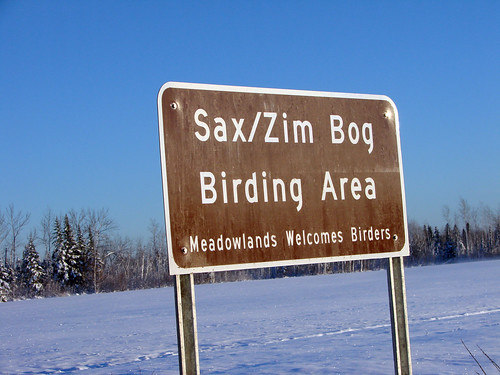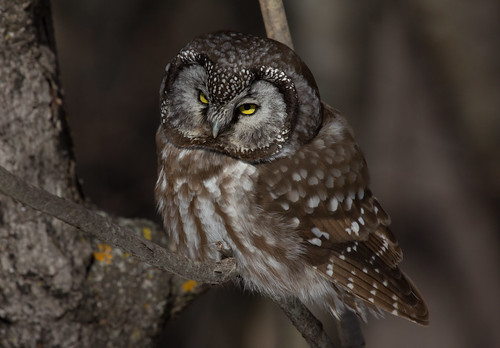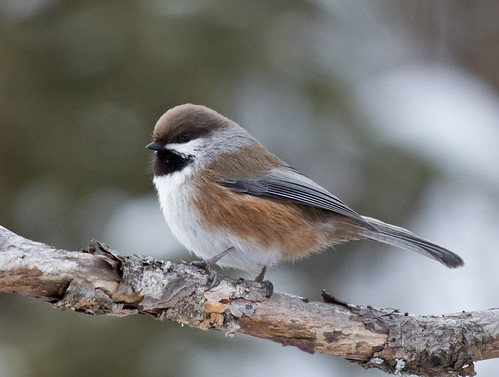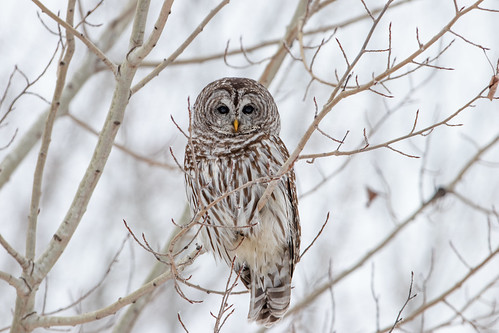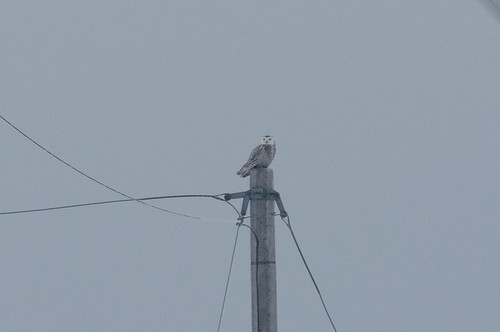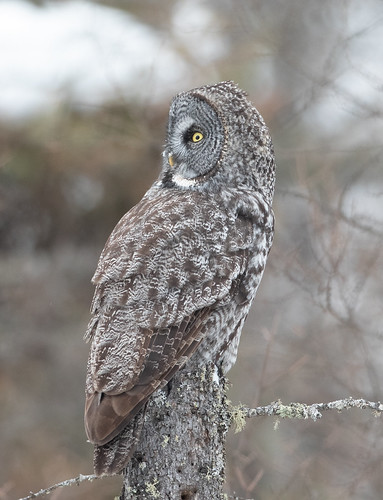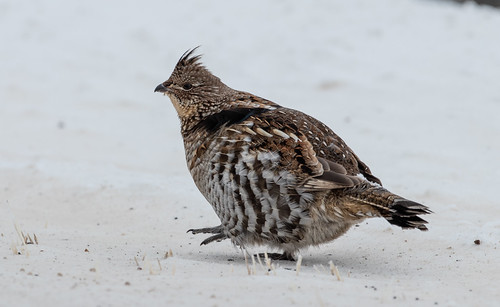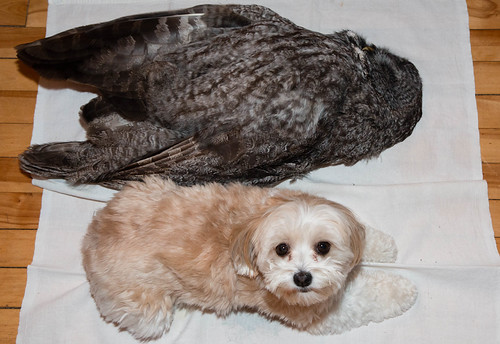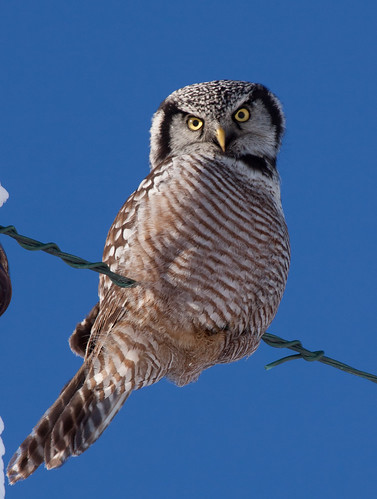We of course can see owls every month of the year, but they are most conspicuous in February, the month providing some of the coldest weather Minnesota can offer. Our coldest day ever, when it hit 60 below zero in Tower, fell on February 2, 1996. Of the top ten coldest temperatures ever recorded in Minnesota, each one at least 52 below zero, one fell in December, three in January, and six in February. As more and more birds grow food stressed, owls that usually stay well hidden in the forest start hunting more out in the open. The hardest to find, the Boreal Owl, is especially more likely to be seen in February than any other month.
A decade and a half ago, when we had our major Great Gray Owl invasion, I went out with three women from Atlanta, Georgia, on two different days, one to the bog, the other up toward Finland and Ely. It was so cold on one of those mornings that even inside my car, a crust of ice formed on our coffee. I’m sure those women never forgot the cold, but they also never forgot the owls we saw—Great Gray, Northern Hawk, and Boreal—along with a bunch of other northern specialties like Boreal Chickadee and Black-backed Woodpecker.
Traveling to a birding destination for just a few days in hopes of specific birds is always a crapshoot—you really never know if you’re going to luck into seeing any of your most wanted species. For some birders, the fun is trying to see all their birds on their own; others prefer to augment their chances by hiring a birding guide. And in a remote area like the bog in winter, where cell phone service can be spotty, some of the good birding is many miles from the nearest town or gas station, and ice and snow can make roads treacherous, a good guide can provide serious peace of mind. Most of the local guides up here form a tight-knit group that share with one another their best sightings, giving clients of all of them a definite leg up on maximizing their species count.
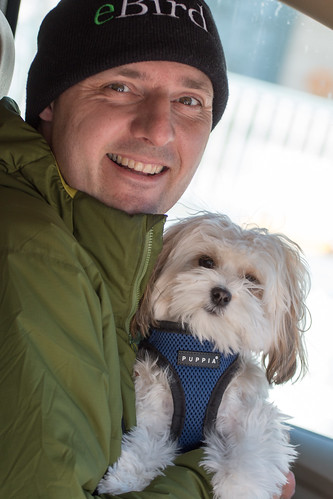 |
| John Richardson gets the Pip Seal of Approval as a wonderful guide. His website is skylarkguiding.com |
 |
| Erik Bruhnke also gets Pip's approval. He's at naturallyavian.com |
Whether you hire a guide or not, check out the Friends of the Sax-Zim Bog website at http://saxzim.org/birding-the-bog/ You can download a map, get information about birding in the bog and logistical help, including a current map with the best spots marked, and more.
If you go to the bog on your own, make sure to stop at the Friends of the Sax-Zim Bog Welcome Center—if you didn't download a map ahead of time, you can get one there, and volunteers keeping track of sightings can tell you what birds have been seen and where. I knew exactly where to look to find the Barred, Northern Hawk, and Snowy Owls last Sunday thanks to the people at the Welcome Center.
They also told me within a half mile where to look for the Great Gray Owl—sure enough, there it was.
The most important thing to do in order to be safe and see birds is to pay attention while you’re driving. Roosting owls can be tucked in trees, very hard to see if someone in the car isn’t scanning.
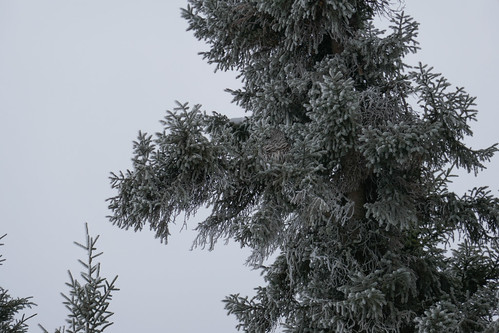 |
| This Barred Owl would be easy to miss without close scanning, or noticing a group of birders looking up. |
 |
| Once you know where it is, you can't miss! |
If you’re not paying attention, you risk scaring birds off before you’re close enough to identify them, or even killing them. I’ve heard from too many heartbroken birders who killed a Great Gray that flew in from the side without them noticing until it was too late.
The single most important thing to look for, besides actual birds, is birders. It’s shockingly easy, even for experienced owlers, to miss an owl tucked in the forest. When one birder spots one, that helps lots of others to see it, too. So if you spot people looking at something, check it out.
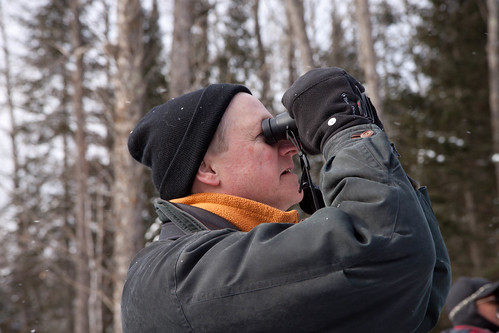 |
| If you see a birder, say, for example, my friend Chuck Hagner here, looking into the trees at the bog, pay attention. |
Birding the Sax-Zim Bog is one of my favorite things about winter. Whether I luck into a day like last Sunday, with lots of owls and photo ops, or whether the birds are few and far between, or whether I get skunked altogether, I always have a good time. There are few guarantees in the world of birds, but if you keep an open mind and an open heart, a February day in the Sax-Zim Bog may be frozen, but like ice cream, it’s guaranteed to be sweet.
